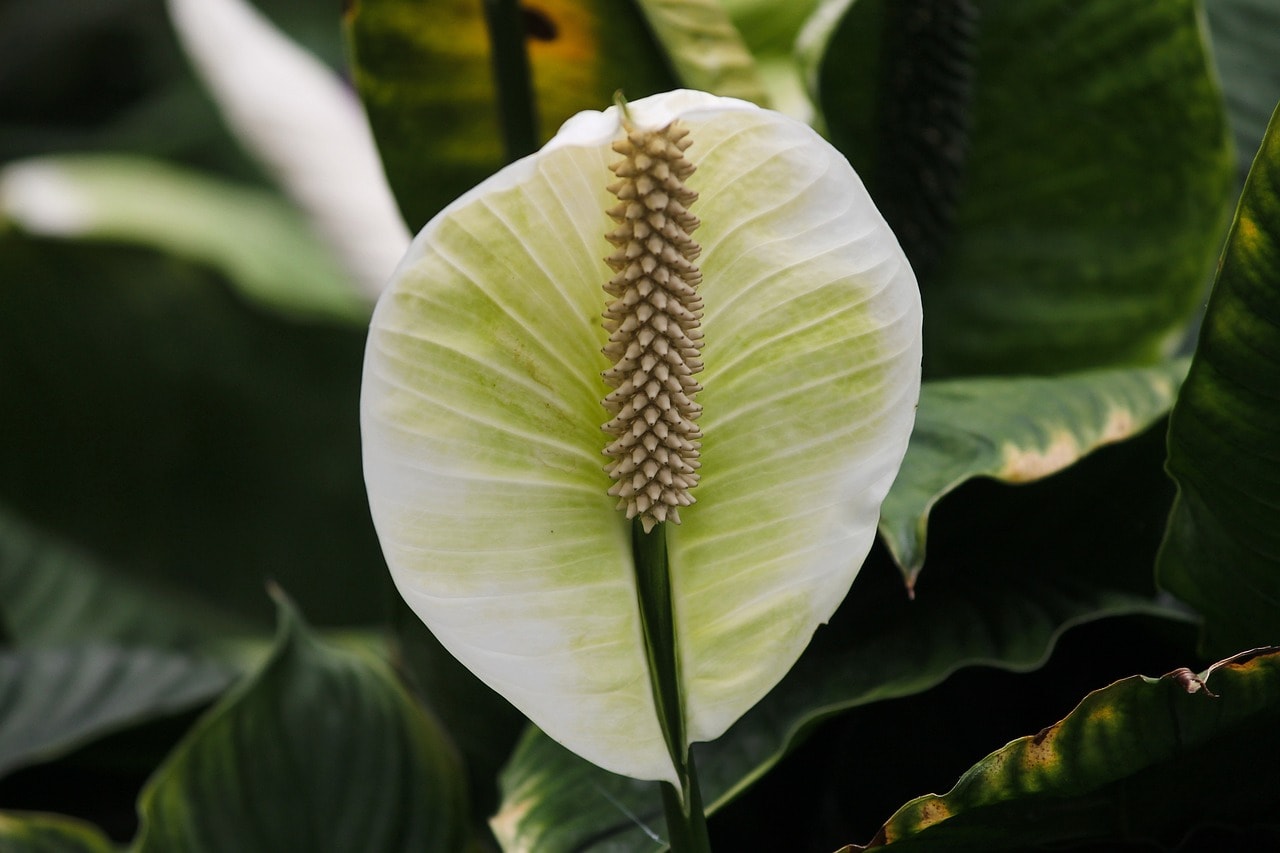Cats are notorious for their curiosity and sometimes, their insatiable appetite for exploration. If you’re a cat owner, you’ve likely faced the moment of dread when you discover your furry friend nibbling on something they shouldn’t, like the lush leaves of a peace lily. In this article, we’ll explore the steps to take if your cat decides to have an impromptu feast on peace lily leaves, a potentially hazardous snack that could lead to an unwanted trip to the vet.
If you want to show off your peace lilies then my personal recommendation is to use a liquid leaf shine Click here to check it out on Amazon.com
The Peace Lily Predicament
Peace lilies (Spathiphyllum spp.) are renowned for their elegant appearance, with their deep green leaves and striking white blooms. However, beneath their aesthetic charm lies a hidden danger for cats. The leaves of peace lilies contain calcium oxalate crystals, microscopic troublemakers that can wreak havoc in a cat’s mouth, tongue, and throat. If you want to know which parts of the peace lilies are toxic to cats then check out my recent article What Part Of Peace Lily Is Poisonous To Cats? ( Stems, Leaves, Flowers, and Pollen ).
The Consequences of a Culinary Mishap
So, what exactly happens if your cat decides to make peace lily leaves their midday snack? The answer isn’t pleasant:
1. Oral Irritation
Calcium oxalate crystals found in peace lily leaves can lead to immediate oral irritation. This often results in excessive drooling, frantic pawing at the mouth, and difficulty in swallowing.
2. Gastrointestinal Distress
Ingesting peace lily leaves can also spell trouble for your cat’s stomach and intestines. Expect episodes of vomiting and diarrhea, making an already unpleasant situation even less enjoyable.
3. Potential Systemic Effects
In severe cases, or if your cat gorges on a significant amount of the plant, the toxic compounds can cause systemic problems, including kidney damage. This is where things get particularly worrisome, as kidney issues can be life-threatening and may not manifest immediately. If you want to know how toxic are peace lilies to cats then check out my recent article Peace Lilies And Cats ( How Dangerous Are They? ).
The Survival Rate Puzzle
The million-dollar question often asked by cat owners in these situations is, “Can cats recover from eating lilies?” The answer isn’t a straightforward yes or no. The outlook for cats that have indulged in peace lily leaves depends on a variety of factors, including the amount ingested, the specific parts of the plant consumed, and your cat’s individual sensitivity.
Swift Action is the Key
If you’ve caught your cat red-pawed munching on peace lily leaves, it’s imperative to act promptly and responsibly. Here’s your step-by-step guide to managing this feline fiasco:
1. Remove the Plant
Your first move should be to swiftly remove the peace lily from your cat’s vicinity. This prevents further munching and limits the damage done.
2. Rinse the Mouth
Armed with a soft cloth or gauze pad soaked in water, gently wipe your cat’s mouth to get rid of any lingering plant residue. A thorough rinse can help alleviate the irritation caused by those pesky crystals.
3. Monitor Your Cat
After the plant is out of reach and the mouth is rinsed, it’s time for vigilant observation. Keep a close eye on your cat for any signs of discomfort or distress. This includes monitoring for excessive drooling, pawing at the mouth, or any difficulty in swallowing.
4. Contact Your Veterinarian
The moment you suspect that your cat has partaken in peace lily leaves, make that call to your veterinarian or the nearest emergency animal clinic. Be sure to provide them with detailed information about your cat’s condition, including the type of plant ingested (in this case, a peace lily), the amount (if known), and any symptoms you’ve observed.
5. Seek Veterinary Care
Once you’re in contact with a professional, follow their guidance to the letter. Depending on the situation’s severity, they may recommend further treatment, such as inducing vomiting, administering activated charcoal to absorb toxins, providing intravenous (IV) fluids, or addressing symptoms like vomiting and diarrhea.
The Potential for Kidney Complications
One of the most concerning aspects of lily poisoning in cats is the potential for delayed symptoms. While some cats show immediate signs of oral irritation, others may appear unaffected for hours or even days after ingestion.
This insidious delay can lead to serious problems, particularly concerning the kidneys. By the time symptoms like lethargy, loss of appetite, increased thirst, or changes in urination become apparent, the situation might have escalated to a critical stage. If you want to know the feng shui benefits of peace lilies then check out my recent article Peace Lily Benefits Feng Shui ( Guide ).
The Importance of Immediate Action
Lily poisoning in cats is a situation where time is of the essence. The toxic effects of lilies can progress rapidly, and even if your cat appears fine initially, it’s essential to remember that kidney damage may not become evident until later stages.
Misidentification Matters
In some unfortunate scenarios, peace lilies might be mistaken for other non-toxic plants, leading to accidental ingestion by cats. This underscores the importance of accurate plant identification. If you’re unsure about the plants in your home, consult with a knowledgeable source, such as a botanist or horticulturist, to confirm their safety.
